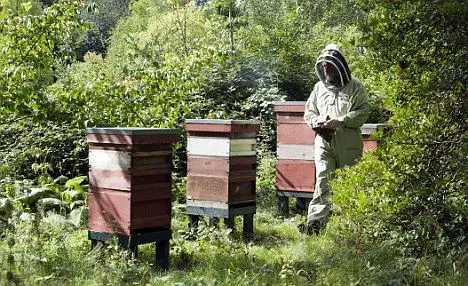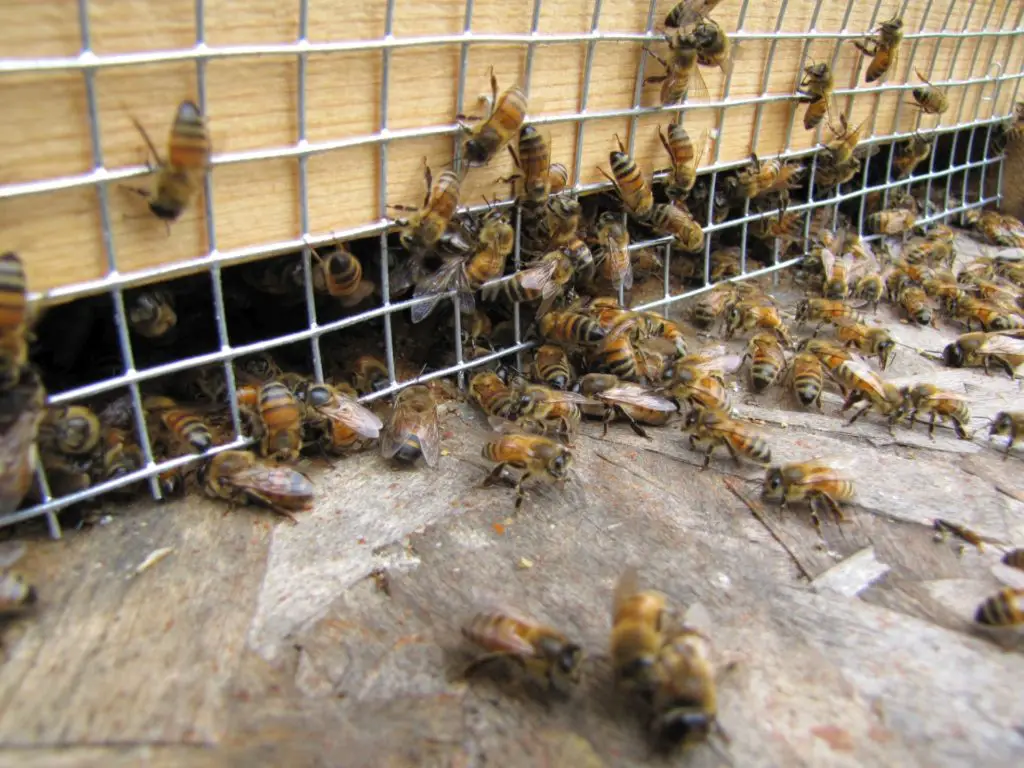Affiliate Disclaimer - As an Amazon Associate I earn from qualifying purchases.
It supports the website. So, Thank you
Beeswax has a multitude of interesting uses such as for making candles, use in skincare products, and even seasoning your cast iron cookware. But in order to be able to use it, it first needs to be pliable and that happens when it’s melted. I’ve been asked many times how to melt beeswax and the good news is that it’s pretty easy to do at home.
The best way to melt beeswax is by indirectly boiling it over a pot of boiling water. This is considered to not only be the safest method but also the easiest.
But there are other ways to melt your beeswax and I’ll cover these alternatives in this guide.
Table of Contents
How Easy Is It To Melt Beeswax?
The great thing about beeswax is that it melts incredibly easily. However, this isn’t always a blessing and can sometimes be more of a curse.
That’s because it’s very easy to over melt the beeswax which then ends up losing its natural color and much of its aroma. For this reason, it’s very important to carefully monitor your beeswax as it melts.
Moreover, if the wax gets too hot, it can start to spit and splatter which poses a safety issue.
Once it has reached the desired consistency, you should remove it from the heat source. Generally speaking, you’ll notice the wax beginning to melt after around two to three minutes but it may take more than ten minutes to melt completely. Of course, this depends on how much wax you’re trying to melt.
Your best bet is to break your beeswax into small pieces. Some beeswax is sold in blocks that can be easily broken into cubes and this makes the whole process so much simpler.
What’s The Best Way To Melt Beeswax?
There are a few different methods you can use to melt beeswax but it’s generally accepted that indirect boiling is the most efficient, easiest, and more importantly, safest option. Plus, you’ll already have everything you need to do this at home.
You’re going to want to take a pan of water and place this onto a heat source until it reaches a simmering point. Your stove top is the easiest way to do this.
Now take a smaller pot but don’t place it straight over the top of the first one. Instead, just rest it on the lip of your pan, keeping hold of the handle so that it remains steady.
The residual heat from the bottom pan will gradually begin to melt your beeswax. Just be sure to stir and keep the wax moving to ensure a good consistency.
It’s worth keeping in mind that while beeswax isn’t harmful, it can leave residue on your pans and utensils. For this reason, I would advise using equipment that you either use solely for beeswax or that you don’t mind having to part with afterwards.
Other Ways To Melt Beeswax
While I would always recommend the above method for melting beeswax, it’s certainly not the only one. If you’d like to try something else then I would suggest melting your beeswax in your crock pot.
You can use the above method and add some water to the crock pot, placing a bowl over the top with your beeswax inside. However, you can also place the wax into the crock pot and turn the device on low.
This is going to be a slower method but it will also give you a chance to melt the wax without having to monitor it so closely. Of course, you’ll still need to keep an eye on it and stir it occasionally but the process won’t be as fast as using indirect boiling.
It’s also very important to make sure that your crock pot is made from a non-stick material. If it isn’t, then I’d strongly urge you to line it with some foil. Alternatively, you can place your wax into a non-stick bowl and put that inside the crock pot.
It is also possible to melt the beeswax in your microwave but it’s essential to only do this in small time increments. Place your beeswax into a microwavable container and pop it into the device for 20-30 seconds at a time.
In between zapping your beeswax, be sure to move it around the container and keep a close eye on the melting process. If not, there’s a good chance that you’ll over melt the wax and it’ll lose its color and aroma.
How To Use Your Beeswax
If you’re someone that’s keen to use natural products in your everyday life then beeswax is well worth getting your hands on.
Not only is it safe and organic but beeswax is also incredibly versatile. The number of things you can use it for are endless; if you’re a creative person, you’re sure to have a lot of fun creating new beeswax recipes.
For starters, you can use the wax to make homemade candles. Try adding a few drops of essential oils for a highly fragrant result. Alternatively, beeswax can be used to maintain your wooden furniture and again, you can scent the wax with oils (just make sure the oils you choose are compatible with your furniture to avoid damage.)
Beeswax is often used in skincare products so it’s ideal for making things like lip balms and lotions. What’s more, it has anti-inflammatory and anti-microbial properties, making it ideal as a salve for wounds to aid healing.
I also know a lot of people that enjoy using beeswax for jobs around the house; you can season your cast iron cookware, lubricate door hinges, and even use it to bring your leather shoes to a shine.
Can You Eat Beeswax?
While beeswax has a whole lot of uses, I wouldn’t recommend it as a food source. Don’t get me wrong, it’s totally edible as it’s a natural product but it’s not something you’d want to add to your diet.
Sometimes, when you buy honey, you will notice that there are small pieces of beeswax floating around inside. It’s absolutely OK to eat this but an over-consumption of beeswax could cause a blockage in the gut, owing to its consistency. For this reason, I wouldn’t get into the habit of biting it off in chunks.
Safety and Practicality Tips
When it comes to melting beeswax, there is always going to be some sort of heat involved. For this reason, it is vital to have a fire extinguisher to hand.
As long as you monitor your beeswax and keep it at the right temperature, you shouldn’t have any problems but it’s always better to be safe than sorry.
Note that beeswax tends to melt at around 140ºF, if it starts to get to around 170ºF then that’s where it may start to spit. If it catches you then this could cause a nasty burn, especially if a lot of wax flies out of the pan.
Moreover, the flash point of wax is 400ºF and if it is allowed to get to this temperature then there’s a good chance it will catch fire.
Melting beeswax can be a messy business and a lot of people don’t want the clean up in their kitchen. This is why earlier I mentioned having dedicated equipment for melting beeswax so that you don’t ruin your favorite cookware.
However, you can take things a step further and do the melting away from the kitchen. You might set up a small portable stove top in the garage or even in the garden if the weather permits.
Final Thoughts
Have you ever wondered how to melt beeswax? If so, I have good news; it’s really easy to do at home. There are several methods to choose from although indirectly boiling the wax is usually the safest and easiest option.
Once your wax is melted, there are so many different things you can do with it.




